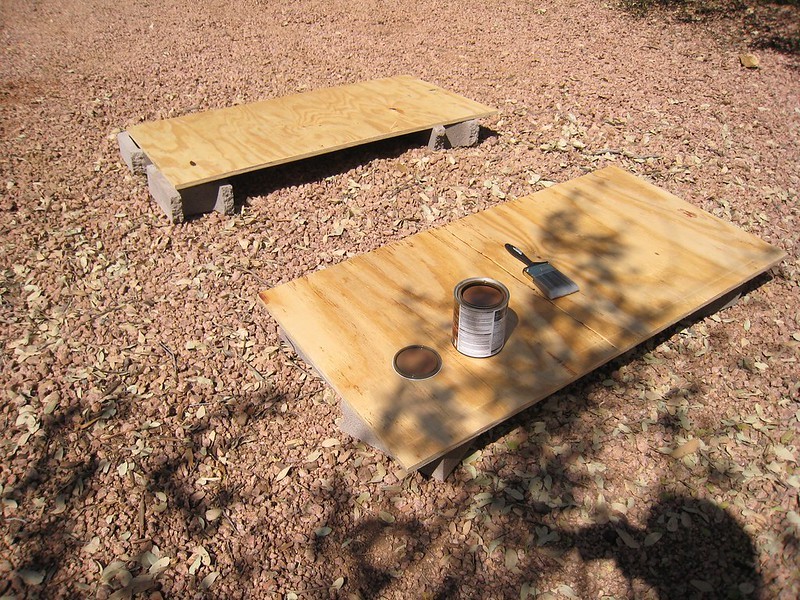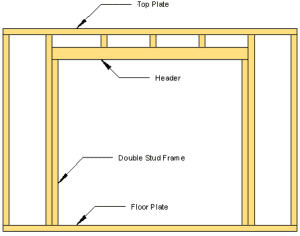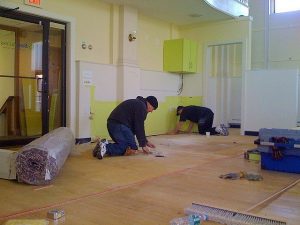Many homeowners eventually build a garden shed in their backyard. That generally coincides with them deciding that their garage just isn’t big enough for everything they’re trying to store in it. Adding a shed, even a small one, provides someplace to put the lawn mower, wheelbarrow and other gardening tools, even if that’s all it is used for. In doing so, it frees up a lot of room in the garage for other things, like a workshop.
One can either decide to buy a prefabricated shed, buy a shed kit or build their shed from scratch. A wide variety of commercially manufactured shed kits are available, made of wood, metal or molded plastic. Of the three, wood is both the most costly and the most durable.
Regardless of the choice, shed kits normally don’t come with a floor, although they might come with a metal floor support structure. Decisions about the floor are normally left to the homeowner, as there are several different options that can be taken, including:
- Concrete pad
- Plywood
- Decking boards
- Gravel
- No floor, just use the ground
Of all these options, plywood is the most commonly used, nicely balancing out the cost to benefit equation. While concrete is more durable than any type of plywood, it is also more expensive. It’s also more difficult to remove, if the shed ever needs to be torn down or moved.
A lot depends on the intended use of the shed. There’s a huge difference between using a shed as a garden shed, a tool shed or a “she shed”. More than anything, the big concern is how much moisture the floor will have to deal with. A garden shed, for example, is likely to have a lot of wet grass clippings and other moisture sources, which can accelerate the decay of a plywood floor.
Types of Plywood to Consider
The term “plywood” has grown to mean a whole class of engineered wood products, not just the multi-layered wood composite, with layers of wood veneers laid perpendicular to each other. Many other products have been developed, which fit into this class of materials, some of which are regularly used in place of what we might consider to be regular plywood.
OSB (Oriented Strand Board)
OSB, sometimes mistakenly thought of as a chipboard, is the most common replacement for traditional plywood in construction applications. It has a nearly identical load rating, although it isn’t as strong when it comes to impact resistance or when used over long spans. However, OSB has one major weakness when it comes to sheds, it has a lot of end grain exposed, making it extremely easy for the board to absorb water. When it does, it expands and loses all structural integrity. So OSB should only be used in cases where it will not be used in conjunction with moisture and where it can be protected from moisture.
CDX Plywood
CDX plywood, specifically ¾” thick CDX plywood, is the easiest solution to gravitate towards as a solution for shed flooring. Considering it’s what’s normally used as subflooring in a home, that seems to make sense. But I can tell you, from painful personal experience, that CDX plywood will only last for about five years as a garden shed floor, and that last year is a bit iffy. It is not protected in any way from moisture, and while it is more moisture resistant than OSB, it isn’t actually moisture resistant.

Pressure-treated Plywood
Pressure-treated plywood has been created specifically for use in situations where moisture is an issue. The pressure treating provides moisture resistance, as well as decay resistance. While not perfect, pressure-treated plywood will last much longer in a shed, than any other type of plywood. As with the CDX plywood, I can attest to this from personal experience. While the floor of the shed I referred to rotted in five years, the ramp outside, leading into the shed, which was made from pressure-treated plywood, hardly looked touched after 10; and the bottom edge was dug into the ground, but still didn’t decay.
Even with pressure-treated plywood, the shed floor should be built at a bit of an angle, so that water will run off of it. Add some ventilation as well, so that moisture evaporating off the floor can escape from the shed, rather than staying inside and attacking other parts of the structure.
An Alternative to Consider
Another material to consider for a shed floor is composite decking. This is a combination of wood fibers and plastic, with the wood fibers providing the strength, while the plastic provides moist resistance. Even if the wood fibers at the surface decay, the moisture won’t get to the wood fibers inside the decking, so it should last well. Composite decking is also impervious to the attention of insects, as they don’t eat plastic.
Technically, composite decking is rated as lasting for 25 years, but that’s with it installed outdoors, where it is exposed to sunlight and other weather conditions. In a shed, where the roof and walls of the shed are protecting the decking from UV light, it should last considerably longer.



